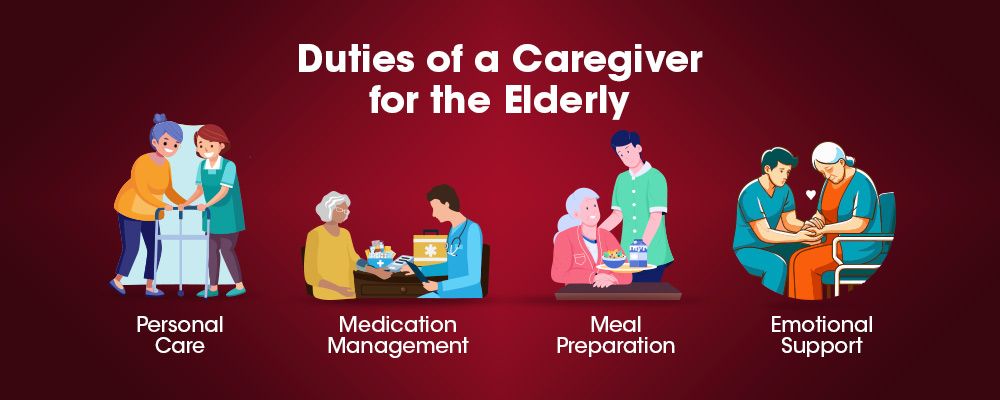Who is a Caregiver?
A caregiver is anyone who assists individuals who need support in daily life activities. These individuals may include older people, those with chronic illness, or individuals recovering from surgeries or accidents. However, the primary goal of a caregiver is to support them with daily tasks that they might struggle to do on their own. Caregivers can be family members, friends or professionals hired to assist in providing care. Many people think that only professional caregivers can play the role of a caregiver, but family members also take on these duties. The American Psychological Association estimates 65.7 million people who are the caregivers for their families or relatives. They play an equally important role in maintaining their loved one’s quality of life. Regardless of who provides the care, the responsibilities of the caregiver remain very similar.
Understanding the difference- Caretaker vs Caregiver
The terms caretaker and caregiver are often used interchangeably, but there is a slight difference in their roles. A caretaker generally refers to someone who looks after a home or property. In contrast, a caregiver is someone who specifically looks after the well-being of an individual, especially those who are ill, elderly, or disabled. A caregiver’s responsibilities are more towards personal care, health, and daily living activities. Whereas a caretaker’s duties include managing a house or farm. However, knowing the difference is quite important when considering caregiver duties for elderly individuals.
How to become a Caregiver?
To take on caregiver responsibilities, it is essential to consider various factors such as having compassion, patience, and emotional and physical readiness. If you are thinking of taking on this role, here’s how to get started:
Assess Your Readiness:
To become a caregiver, you must have great emotional strength and empathy. Make sure you’re ready to provide physical and emotional support to a patient or the individual who requires care.
Seek Proper Training:
While some people provide informal care, others might need to complete caregiving courses or obtain certifications to offer medical assistance.
Understand Caregiver Responsibilities:
It’s crucial to understand the caregiver’s duties involve medication management, daily assistance with activities, and emotional support. Once you know how to treat the person, what their specific needs are, and what things to consider, you will be able to treat them in a more personalized way.
Roles of a Caregiver to a Patient
While the caregiver duties of elderly individuals often center around their personal and health needs, the role of a caregiver to a patient may be slightly different. Especially if the patient is recovering from surgery or an illness. A caregiver duty typically involves:
Deak with Recovery Phase:
This includes helping the patient regain their health through physical therapy, such as exercise, and ensuring they follow the doctor’s instructions.
Monitor Vital Signs:
Caregivers may need to monitor blood pressure, heart rate, and other health indicators in some cases, if the patient has a serious illness.
Provide Comfort:
Another essential caregiver role is offering comfort and ensuring the patient remains as comfortable as possible during their recovery period.
Conclusion
In conclusion, understanding caregiver duties and caregiver responsibilities is essential for anyone looking to provide care for elderly individuals or those in need. These duties range from daily personal care to emotional support and health management. Furthermore, networking within the healthcare industry and preparing for interviews can help you grow professionally. Thus opens the doors for greater opportunities and growth in the future.



